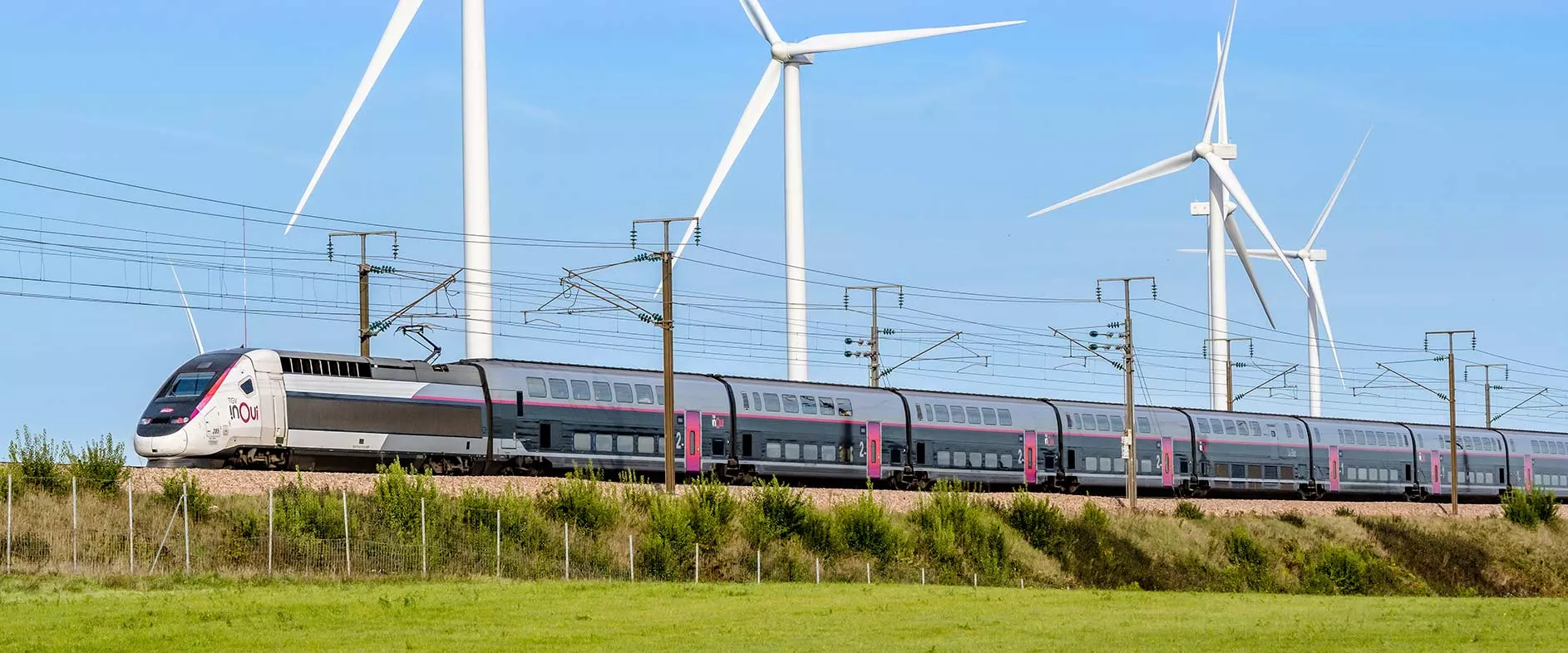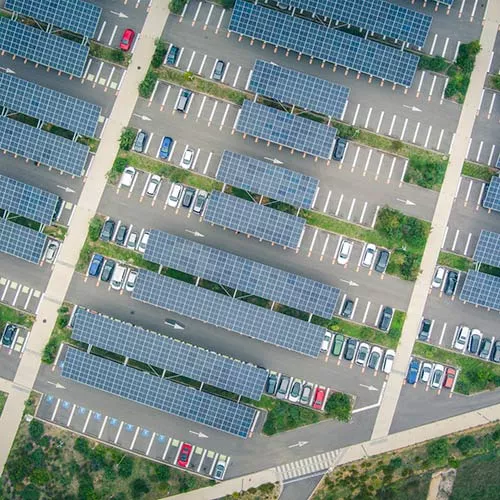
On the right track to cut greenhouse gas emissions
SNCF is a vital player in low-carbon mobilities, offering sustainable solutions to the twin challenges of limiting climate change and protecting the environment.

Our goals to reach by 2030
Our aim is clear: by 2030, SNCF Group will have to reduce its greenhouse gas (GHG) emissions by 30% in the transportation sector and by 50% in the property sector, in comparison with 2015. This is fully in line with the long-term objective of the Paris Agreement (2015), which commits signatory countries to achieving carbon neutrality (zero net emissions) by 2050.
2030 thus stands as a significant milestone in this global strategy.
For the Group, achieving energy transition and carbon neutrality is both a priority, which must permeate the company at every levels, and an opportunity to develop rail and sustainable mobility for passengers and freight.
Ou strategy greenlit by the Science-Based Targets initiative (SBTi)
In July 2025, the Science Based Targets initiative (SBTi) validated our targets, i.e. reducing our Scope 1 and 21 greenhouse gas emissions by 42% between 2022 and 2030, along with our additional targets for indirect Scope 31 emissions. For example, we'll set science-based decarbonization targets by 2028 for suppliers representing 50% of emissions related to the purchase of goods and services.
SBTi constitue aujourd’hui la seule méthodologie reconnue mondialement par les investisseurs, ONG et agences de notation extra-financière pour garantir la crédibilité et la robustesse des trajectoires bas-carbone.
Recognized worldwide by investors, NGOs, and non-financial rating agencies SBTi is currently the only methodology guaranteeing the credibility and resistance of low-carbon trajectories.